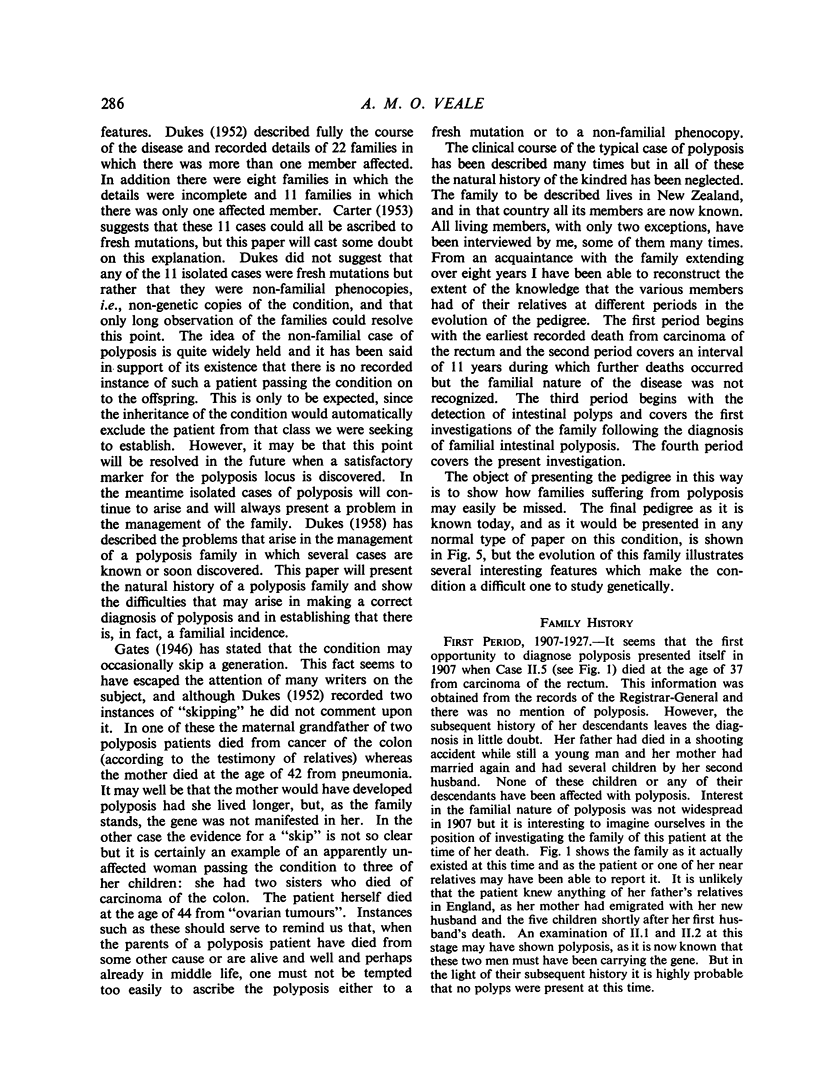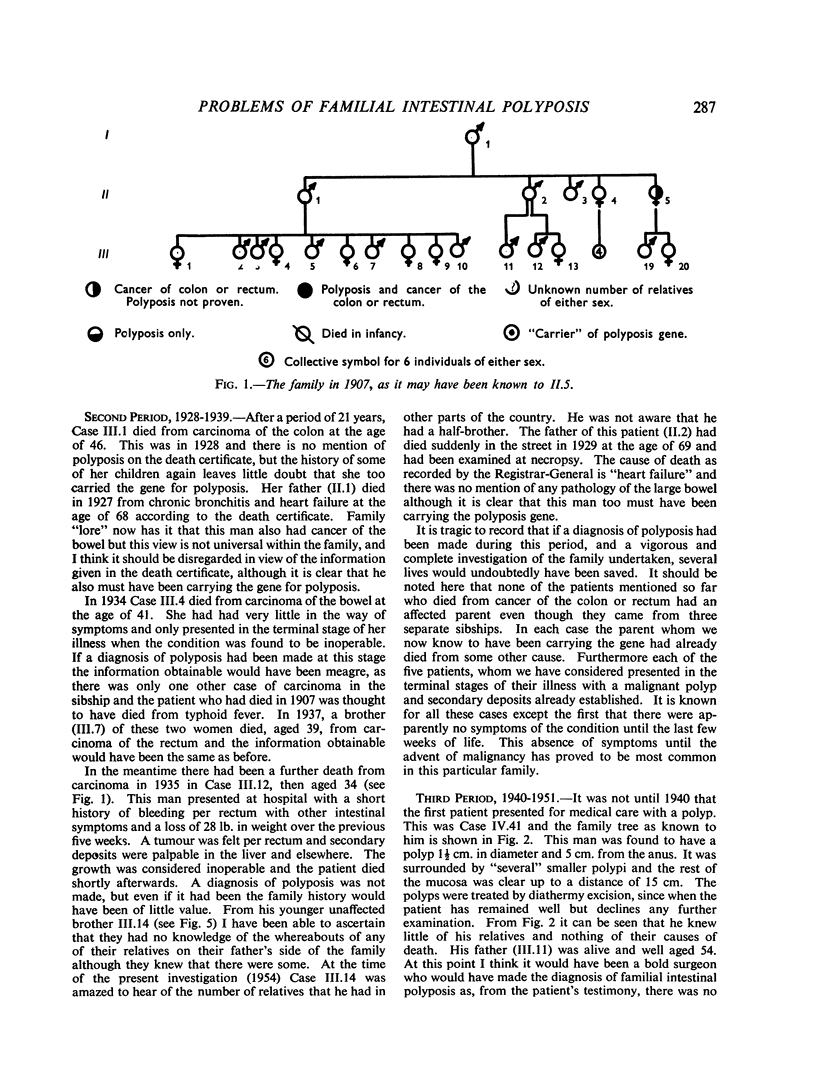Abstract
The history of a family suffering from familial intestinal polyposis is presented, showing how a delayed onset of symptoms together with a lack of knowledge of affected relatives may obscure the familial nature of the disease. The necessity of examining all accessible relatives, irrespective of their advancing years, is stressed. Further, it is shown that in the absence of any familial incidence the proper diagnosis of an isolated case of polyposis is that the disease is the result of a fresh mutation.
The possibility of a non-familial form of this disease cannot be proved at present and will require a special genetic investigation. It is emphasized that the diagnosis of non-familial polyposis should not be made, as this will lead to a relaxation of the vigil that should be kept on the descendants of all patients with polyposis.
Full text
PDF





Selected References
These references are in PubMed. This may not be the complete list of references from this article.
- BARTHOLOMEW L. G., DAHLIN D. C. Intestinal polyposis and mucocutaneous pigmentation (Peutz-Jeghers syndrome); further comments and report of an additional case. Minn Med. 1958 Dec;41(12):848–852. [PubMed] [Google Scholar]
- BARTHOLOMEW L. G., DAHLIN D. C., WAUGH J. M. Intestinal polyposis associated with mucocutaneous melanin pigmentation Peutz-Jeghers syndrome; review of literature and report of six cases with special reference to pathologic findings. Gastroenterology. 1957 Mar;32(3):434–451. [PubMed] [Google Scholar]
- DUKES C. E. Familial intestinal polyposis. Ann Eugen. 1952 Aug;17(Pt 1):1–29. doi: 10.1111/j.1469-1809.1953.tb02531.x. [DOI] [PubMed] [Google Scholar]
- GARDNER E. J., PLENK H. P. Hereditary pattern for multiple osteomas in a family group. Am J Hum Genet. 1952 Mar;4(1):31–36. [PMC free article] [PubMed] [Google Scholar]
- GARDNER E. J., RICHARDS R. C. Multiple cutaneous and subcutaneous lesions occurring simultaneously with hereditary polyposis and osteomatosis. Am J Hum Genet. 1953 Jun;5(2):139–147. [PMC free article] [PubMed] [Google Scholar]
- JEGHERS H., McKUSICK V. A., KATZ K. H. Generalized intestinal polyposis and melanin spots of the oral mucosa, lips and digits; a syndrome of diagnostic significance. N Engl J Med. 1949 Dec 22;241(25):993–passim. doi: 10.1056/NEJM194912222412501. [DOI] [PubMed] [Google Scholar]
- NEEL J. V. Problems in the estimation of the frequency of uncommon inherited traits. Am J Hum Genet. 1954 Mar;6(1):51–60. [PMC free article] [PubMed] [Google Scholar]
- OLDFIELD M. C. The association of familial polyposis of the colon with multiple sebaceous cysts. Br J Surg. 1954 Mar;41(169):534–541. doi: 10.1002/bjs.18004116917. [DOI] [PubMed] [Google Scholar]
- REED T. E., NEEL J. V. A genetic study of multiple polyposis of the colon with an appendix deriving a method of estimating relative fitness. Am J Hum Genet. 1955 Sep;7(3):236–263. [PMC free article] [PubMed] [Google Scholar]
- TURCOT J., DESPRES J. P., ST PIERRE F. Malignant tumors of the central nervous system associated with familial polyposis of the colon: report of two cases. Dis Colon Rectum. 1959 Sep-Oct;2:465–468. doi: 10.1007/BF02616938. [DOI] [PubMed] [Google Scholar]


